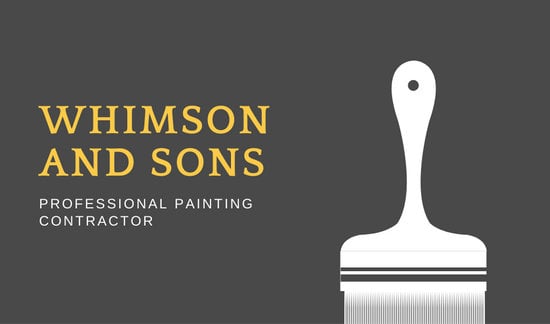Learn More About The Methods Which Seasonal Variables Can Influence The Success Of Business Outside Paint And Figure Out The Best Times To Accomplish Long-Term Results For Your Job
Learn More About The Methods Which Seasonal Variables Can Influence The Success Of Business Outside Paint And Figure Out The Best Times To Accomplish Long-Term Results For Your Job
Blog Article
Staff Author-Carlson Bagger
When you're intending a commercial outside painting project, seasonal elements can make or damage your results. You'll intend to consider exactly how temperature and humidity impact paint application and drying times. Selecting the best period can ensure your paint adheres properly and lasts longer. However which seasons are truly the best for this kind of work? Let' go here out the key elements that can influence your task's success.
The Effect of Temperature on Paint Application
When you're preparing an industrial exterior paint task, the temperature level can dramatically impact how well the paint adheres and dries.
Preferably, you want to repaint when temperature levels range between 50 ° F and 85 ° F. If it's as well chilly, the paint might not cure appropriately, resulting in concerns like peeling off or fracturing.
On the flip side, if it's too warm, the paint can dry also swiftly, avoiding proper bond and causing an uneven coating.
You ought to also consider the time of day; early morning or late afternoon provides cooler temperature levels, which can be much more favorable.
Constantly examine the maker's suggestions for the specific paint you're utilizing, as they often give assistance on the suitable temperature level array for optimum outcomes.
Humidity and Its Effect on Drying Times
Temperature level isn't the only ecological element that affects your business exterior paint task; humidity plays a considerable duty as well. High humidity degrees can reduce drying times considerably, affecting the general quality of your paint work.
When the air is saturated with wetness, the paint takes longer to heal, which can cause concerns like inadequate bond and a greater threat of mildew development. If you're painting on an especially moist day, be planned for extensive wait times between layers.
It's critical to monitor neighborhood weather and plan appropriately. Preferably, go for humidity degrees in between 40% and 70% for optimal drying out.
Maintaining these consider mind ensures your job stays on track and provides a long lasting finish.
Best Seasons for Commercial Exterior Paint Projects
What's the very best time of year for your business external paint jobs?
Spring and very early loss are typically your best choices. During these periods, temperatures are moderate, and moisture levels are commonly lower, producing perfect problems for paint application and drying out.
Avoid summertime's intense heat, which can trigger paint to dry too swiftly, resulting in bad adhesion and surface. Similarly, winter season's cool temperature levels can prevent proper drying out and curing, running the risk of the durability of your paint task.
Go for days with temperatures between 50 ° F and 85 ° F for optimal results. Keep in siding tulsa to inspect the neighborhood weather forecast for rain, as wet conditions can destroy your project.
Planning around these factors ensures your painting project runs efficiently and lasts much longer.
Conclusion
Finally, planning your business exterior painting tasks around seasonal factors to consider can make a considerable difference in the outcome. By interior painting okc during the suitable temperatures and humidity levels, you'll guarantee much better bond and drying times. Continue Reading in mind to keep an eye on regional weather forecasts and pick the right time of year-- spring and very early loss are your best bets. Taking these steps will aid you attain a long lasting and specialist finish that lasts.
